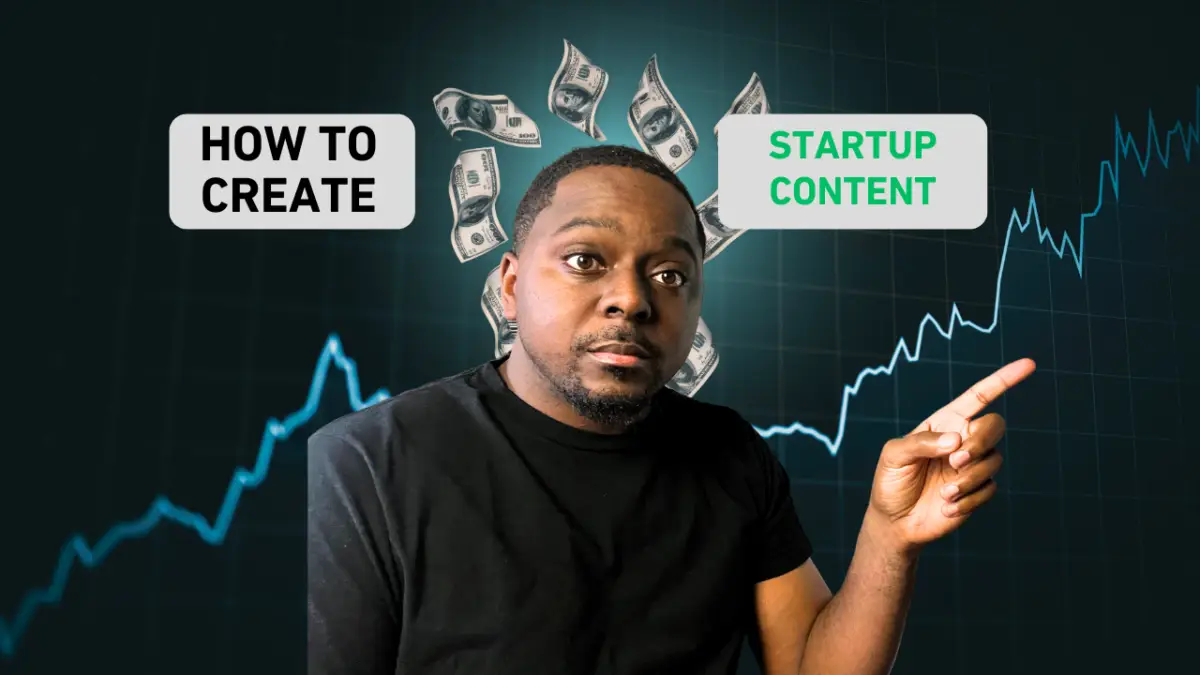Content marketing isn’t just about creating; it’s about maximizing. Startups often fall into the trap of thinking they need to create something new every single time they show up online. But the reality is: your best content is probably something you’ve already made. Repurposing is the smartest way to get the most out of your time, resources, and message. This is your content repurposing strategy.
Why Repurposing Is a Game-Changer for Startups
Startups don’t have the luxury of bloated marketing budgets or massive teams. Every hour and dollar counts. That’s why we create pillar content and then develop other pieces of content to support it. Each time you release content, you’re expanding your reach further and further outside of your original market.When you repurpose content, you’re:
- Extending the lifespan of your best ideas
- Getting in front of new audiences on different platforms
- Creating an omnipresent brand without burning out
It’s not just efficient—it’s essential.
Step 1: Start With Pillar Content
The foundation of content repurposing is your pillar content. These are long-form, high-value pieces that can be sliced and diced into smaller assets. Think of pillar content as the foundation of your content strategy. These videos and posts should focus on your key ideas, concepts and methods. Your positioning improves immediately with the right approach to pillar content.
Examples of pillar content:
- Podcast episodes
- YouTube videos
- Webinars or livestreams
- Long-form blog posts
- Guides or ebooks
The key is that this content is rich in insight and context, allowing you to extract multiple ideas and angles from it. I plan pillar content before I make anything.
💡 Pro Tip: Focus on topics that have lasting value and tie directly to your core offers. Educational content around problems your startup solves is perfect.

Step 2: Extract Key Moments
AI can help extract key moments but you can’t rely on it for content repurposing. AI makes the process easier but doesn’t do everything. Once you’ve created your pillar content, go through it and identify:
- Memorable quotes
- Tactical insights
- Visual frameworks or step-by-step processes
- Questions or stories that spark conversation
These elements are your content repurposing gold. You can now spin these into various formats:
- Short video clips (Reels, TikToks, YouTube Shorts)
- LinkedIn posts and Twitter threads
- Infographics or carousel posts on Instagram
- Pull quotes for email newsletters
- Audiograms or soundbites
- Slide decks
🎯 Goal: Turn one big idea into 15-20 smaller pieces of content. Think of each pillar as a mini campaign. Content repurposing has to be planned effectively.
Look at it this way, if you have 12 pieces of content to promote one major piece of content, what kind of reach would that pillar content have on your brand? Honestly, you’d double your viewership and engagement almost immediately – even if the content is bad. So the more content you have to amplify your pillars, the better.
Step 3: Align With the Buyer’s Journey
Effective content repurposing isn’t just about cutting content—it’s about reshaping it to match where your audience is.
- Awareness: Use bite-sized content to introduce a pain point or spark curiosity.
- Consideration: Share breakdowns, how-tos, or frameworks pulled from your content.
- Decision: Use testimonials, case studies, or product-driven tips taken from interviews, podcasts, or long-form videos.
🧭 Content Map: Draw out your customer journey and plan how each repurposed piece can move people closer to the sale.
The buyer’s journey needs to be clear to you as you’re creating a content repurposing plan. For example, I created my newsletter, the Founder Content Guide, to help more founders create content that will get their business results. The newsletter is vital to nurturing my prospects and building a connection with the market. I’d say my newsletter is my nurture platform but I’ve even built in attract with lead magnets and other assets.
Step 4: Match Formats to Platforms
Content repurposing requires focus because each platform is different. No platform is the same. If you treat each platform like it;s the same, you’ll see analytics drop massively. The intro I use on YouTube wouldn’t be part of my TikTok strategy. My long form written post from LinkedIn would be switched to a thread on Twitter.
Each platform has a native language. Your job isn’t to simply copy/paste—it’s to adapt.
- LinkedIn: Share lessons or frameworks. Use a narrative or story-driven format.
- X (Twitter): Break down insights into 5–7 tweet threads or punchy one-liners.
- Instagram: Use carousels and Reels to summarize key lessons visually.
- YouTube Shorts/TikTok: Use 15–30 second video clips that feature face-to-camera insights, bold hooks, or controversial takes.
- Email: Curate bite-sized lessons with a link back to the full podcast, video, or blog.
📈 Tip: Add platform-native CTAs. Don’t just say “watch the full episode”—say why it’s worth their time and how it helps them.
Step 5: Content Repurposing Like a Machine
The power of repurposing multiplies with consistency. Build a distribution calendar that lets you:
- Assign each pillar content 2 weeks of promotion
- Break down 5-10 clips from each
- Turn every clip into 3 platform-native posts
This turns one long-form episode or blog into 30+ pieces of content across channels.
🛠 Tools to help:
- Descript or Riverside for video/audio clips
- Canva or Figma for visual design
- Buffer, Hypefury, or Loomly for scheduling
Learn more about our master content growth strategy here.
Step 6: Track Performance and Double Down
Not every clip will hit—but the ones that do are signals. Track metrics like:
- Watch time and retention (video)
- Engagement and reach (social posts)
- Click-through rate (email)
- Shares and saves (Instagram, LinkedIn)
Use that data to:
- Create follow-up content on what resonated
- Turn breakout ideas into new pillar pieces
- Double down on the format that fits your voice
🧪 Experiment Tip: A piece that flopped on one platform might crush it on another. Test everything. You’re not doing content repurposing correctly if you can’t measure the impact of what you create.
Advanced: Bundle and Automate
Once you’ve repurposed multiple pillar pieces, you can start bundling content:
- Turn a 5-part podcast series into a gated ebook
- Combine blog posts into an email course
- Build a video playlist for onboarding or sales enablement
And when you’re ready, automate the process:
- SOPs for editors and VAs
- Airtable or Notion templates for tracking ideas
- Automated repurposing with tools like Repurpose.io or Zapier
Final Thoughts: Repurposing Is Your Startup’s Superpower
If you’re constantly stressed about creating content, you’re playing the game on hard mode. Repurposing lets you:
- Build a smarter marketing engine
- Show up where your customers are
- Increase ROI on every piece you create
Start with one pillar piece this week. Break it into five clips. Share those clips across three platforms. Track what hits. Then do it again.
This is the compounding power of content—and startups who learn to repurpose will grow faster, louder, and smarter.
Welcome to the new way to market.
Want to see this in action? Join the Hinesight Marketing Newsletter and get a weekly breakdown of how we turn one idea into 15+ pieces of content.
→ [Subscribe here] (insert link)


